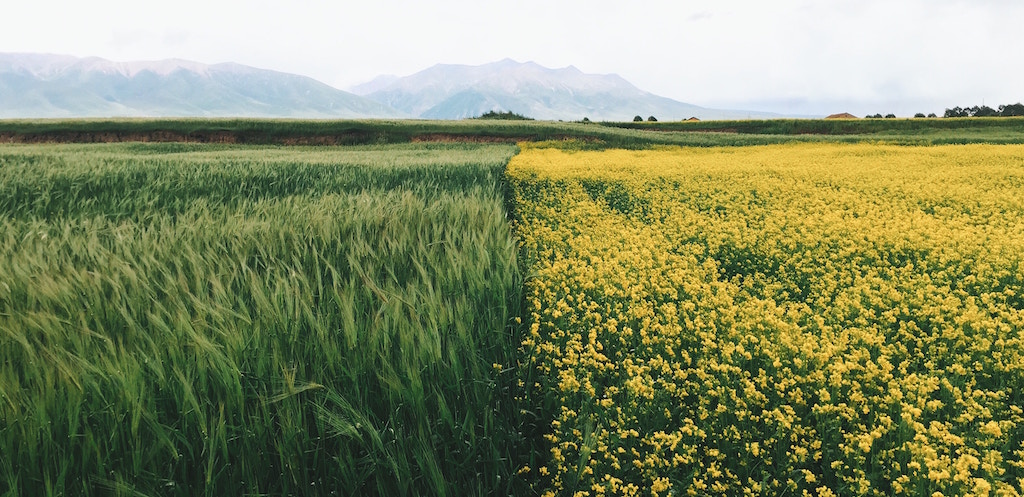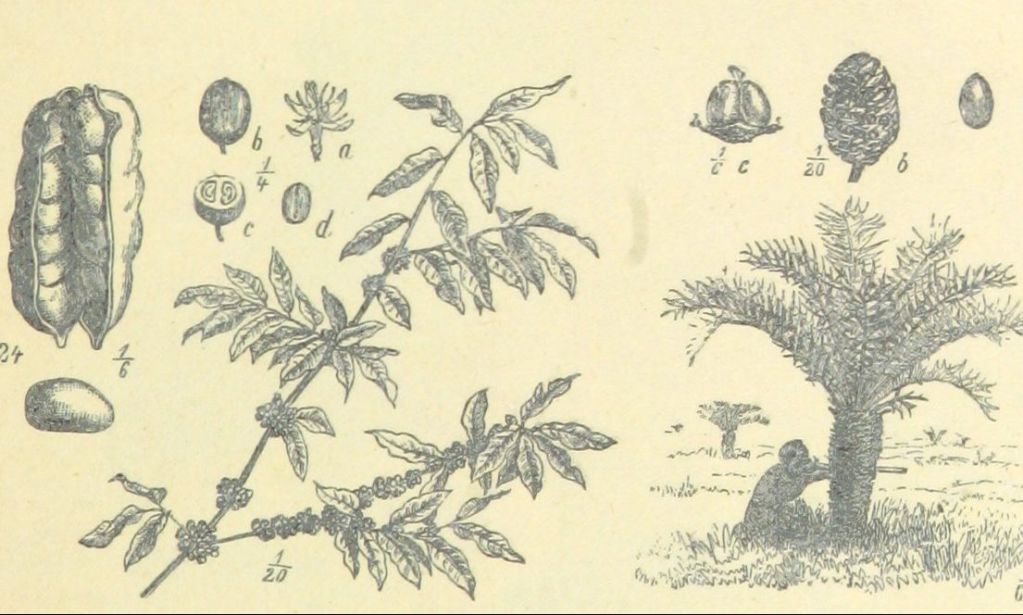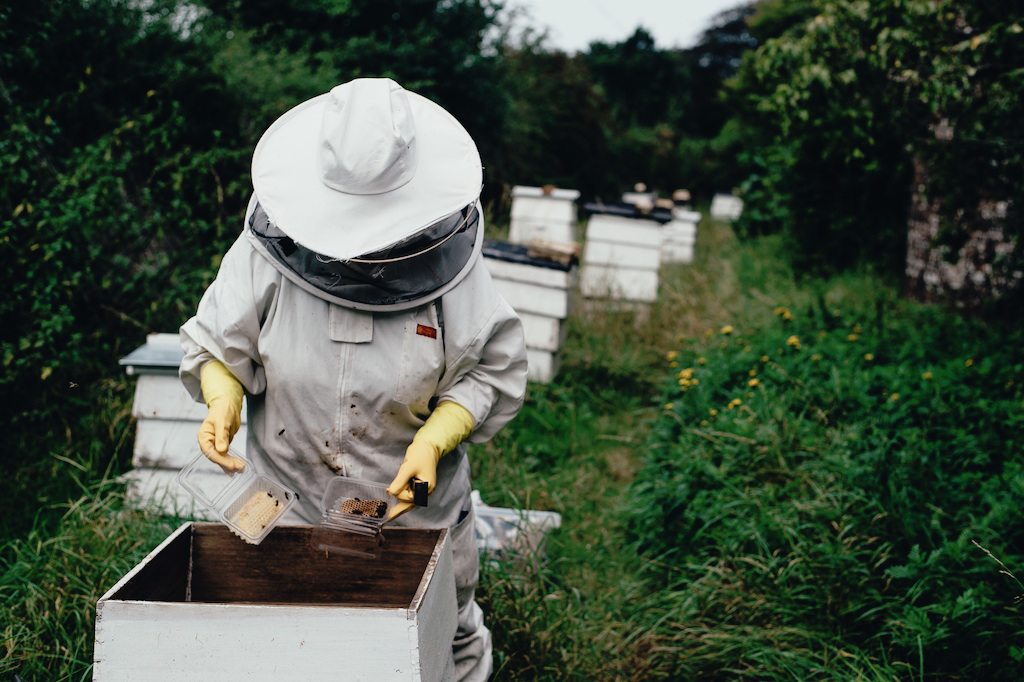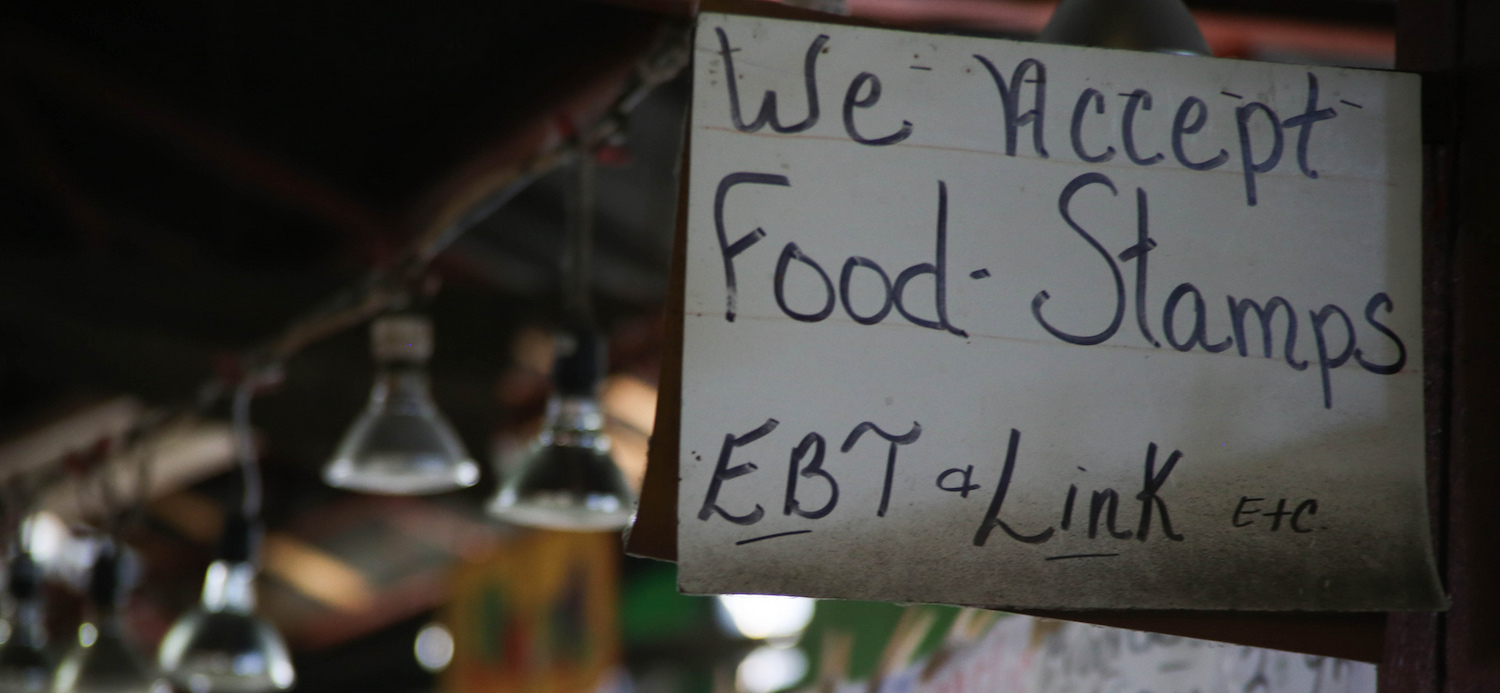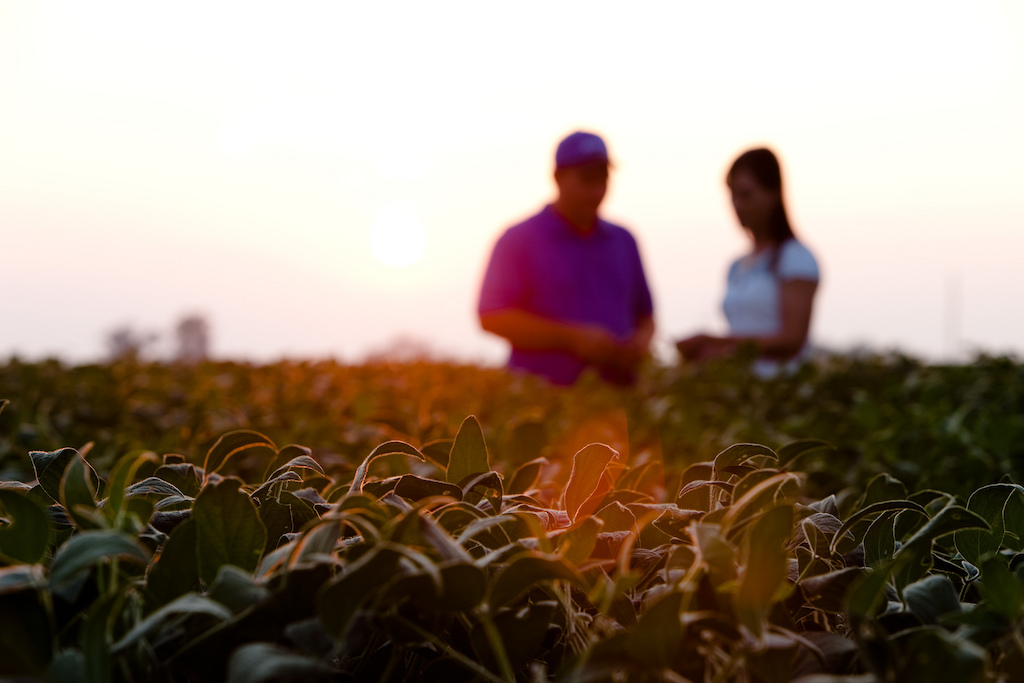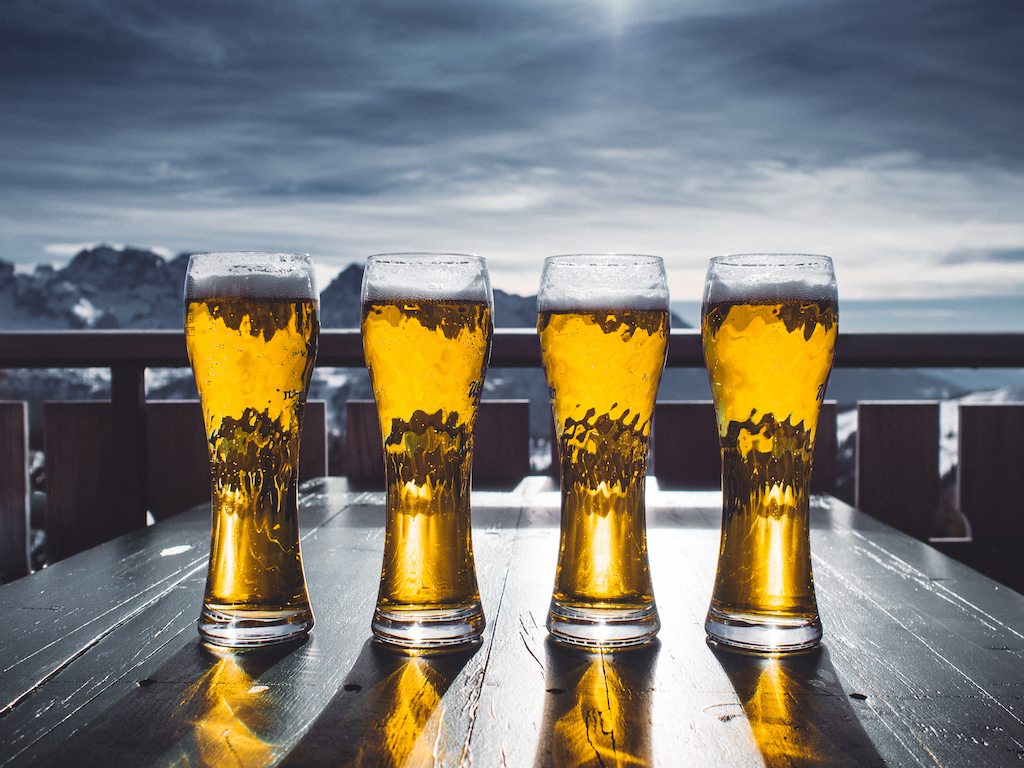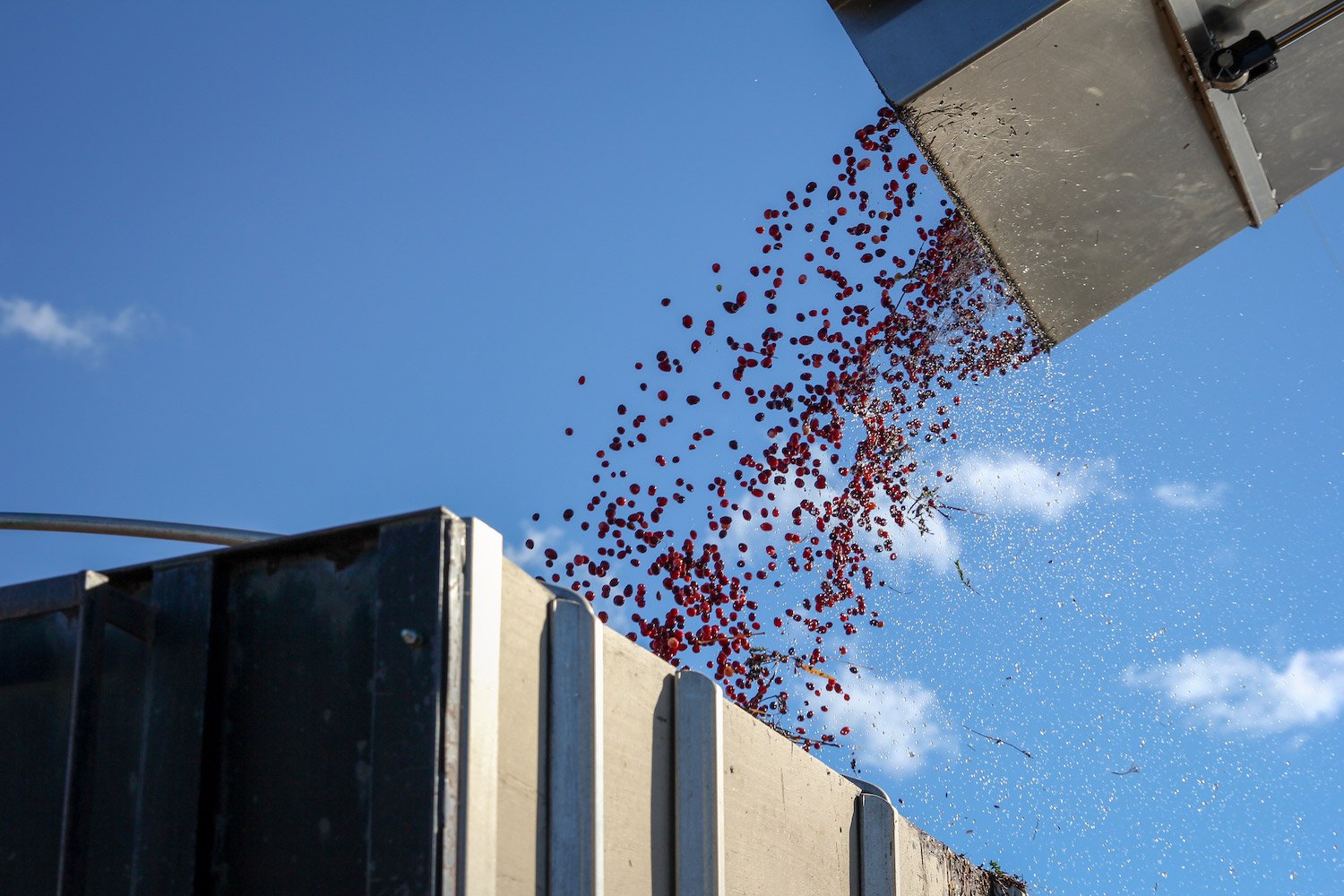
Prashanth Kamalakanthan
It’s a system that guarantees we’ll waste 240 million pounds of fruit. Trouble is, no one is incentivized to scale back production.
The cranberry harvest always starts with a flood.
Each fall, after bright sun and cold nights transform the fruits from green to ruby red, cranberry farmers inundate their bogs, submerging the berries in knee-high water. Working in teams, wader-clad farmworkers push “egg beaters”—wheeled water reels that look like giant whisks—through the water. The beaters shake the fruit loose from vines, freeing the hollow berries to drift to the surface and float.
On a chilly day in October, the harvest team fanned out across the bog at Pine Island Cranberry Farm in Chatsworth, New Jersey, trails of berries floating in their wake.
The rafts of floating berries, stark against the still water and the green of the New Jersey Pine Barrens, make for a compelling photo opportunity. (Cranberry farmers have recognized this, and the grower cooperative Ocean Spray films advertisements during the harvest. Actors stand in for the farmhands.)
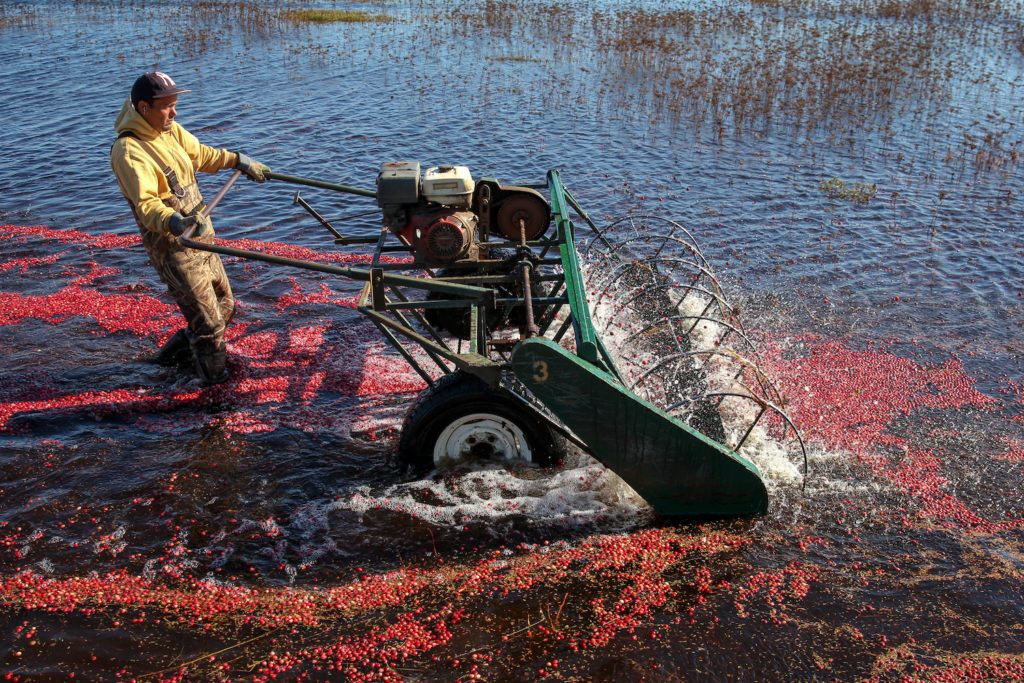
A farmhand uses what’s called an “egg beater” through flooded cranberry bogs to shake the fruit loose from their vines. Cranberries, once separated, float to the top of the water
Prashanth Kamalakanthan
But far from being an ecological necessity, the flood is actually part of a labor-saving harvest method invented sometime around the middle of the 20th century. Dry-harvesting cranberries is backbreaking work. The vines are low to the ground, and the berries grow in layers beneath a canopy of leaves. Farmers realized they could cut costs significantly by using machines to dislodge the fruit. Water did the rest of the work.
On the day I visited Pine Island, the harvest was in full swing. Workers pushed egg beaters through one bog while a Rube Goldberg-type system of tubes and pumps vacuumed berries out of the water and spat them into a waiting truck bed nearby. Once full, the truck drove the freshly picked berries a few miles down the road to the receiving center, where they were sorted and graded.
The harvest is a race against time. Cranberries can’t float for too long or they’ll rot, and the threat of frost looms large over the whole operation. (When I reached a neighboring farmer later in the week, he apologized for missing my first call—he’d been up late, he said, using his sprinklers to freeze a thin sheet of ice over his bogs. The ice protected the crop overnight, then melted in the morning.)
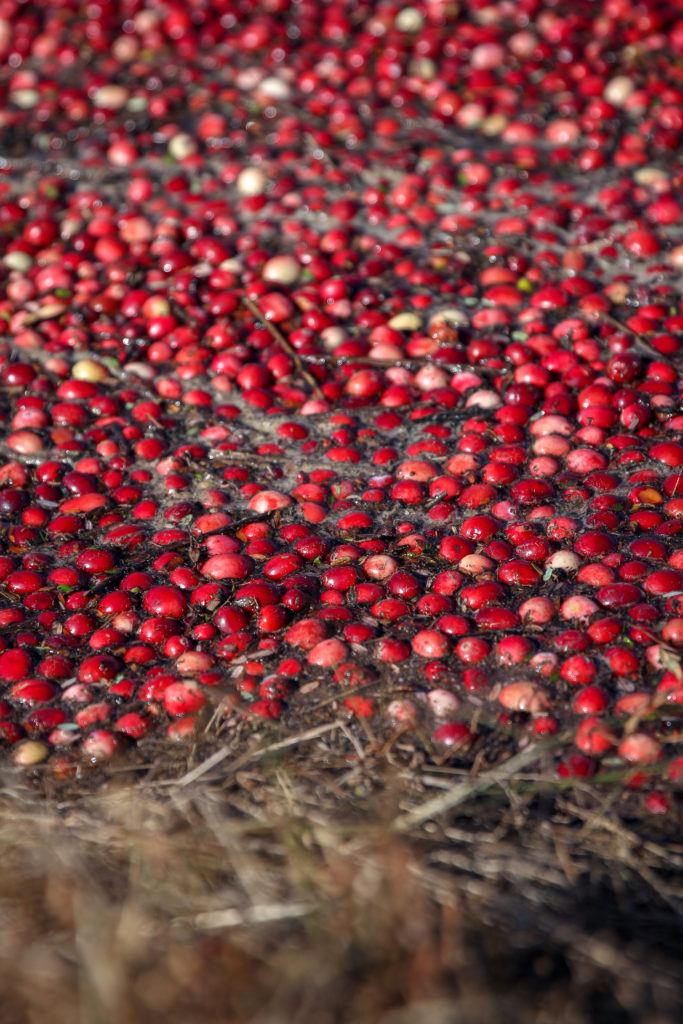
Prashanth Kamalakanthan
Cranberries bobbing at the surface of a bog, where they wait to be vacuumed out
But the time crunch won’t be the only factor that complicates the harvest. This year, the cranberry industry will reckon with a flood of a different sort; just like the wet harvest, this one is entirely of its own making.
The problem is simple. There’s a cranberry surplus. American farmers have grown a lot more fruit than people will eat and have flooded the market. They can’t save all the extra berries for a rainy day—or a year’s worth of Thanksgiving dinners—because we’re already storing much of the 2017 crop. There are more berries in storage right now then we’ll eat this year. And all that extra fruit is driving prices down below the cost of growing it. (Sound familiar? This is happening in the dairy and blueberry industries, too.)
To get rid of some of those surplus berries, the cranberry industry has collectively agreed to destroy a quarter of its crop. The United State Department of Agriculture (USDA) approved their request in September. The purpose of this practice, dubbed “volume regulation,” is to create enough scarcity to drive up the price of a barrel of cranberries. If all goes well, the price of berries will rise, farmers will come out ahead, and supply and demand will eventually even out.
It’s a funny quirk of American agricultural policy that this practice, which is intended to manipulate prices, is exactly the kind of thing that sends tuna moguls to jail and puts poultry processors in the crosshairs of massive class-action lawsuits. But it’s actually totally legal, and even pretty common, thanks to the Capper-Volstead Act passed by Congress nearly 100 years ago, which exempts farmers from some antitrust laws. Capper-Volstead allows farmers to make decisions—like restricting supply—as a group, decisions that would be illegal in any other industry.
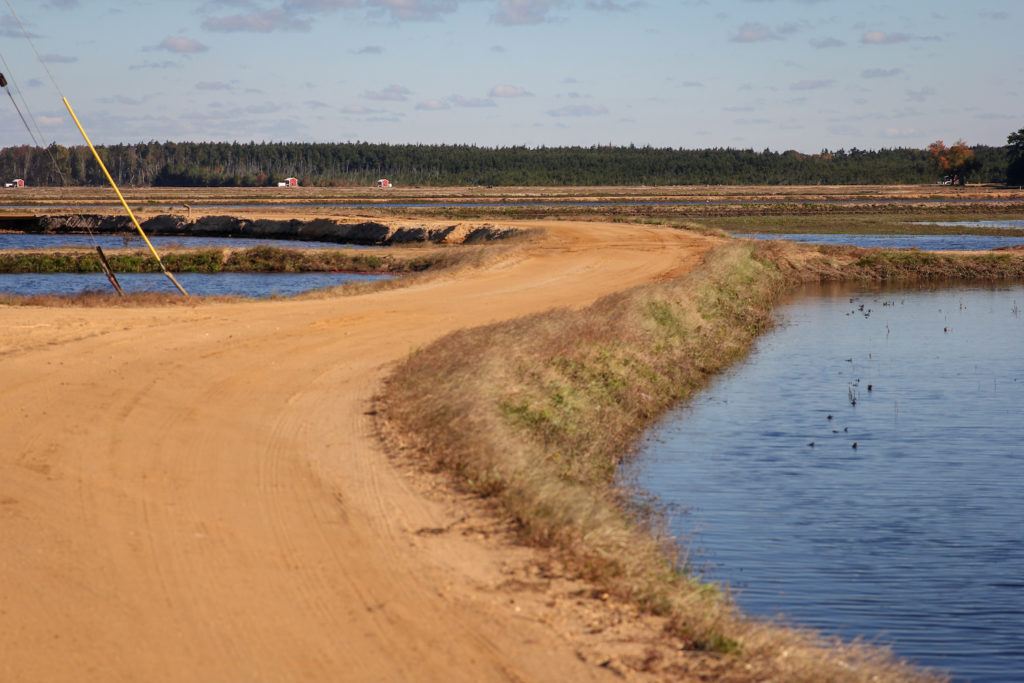
A dam between cranberry bogs. During the harvest, trucks drive along the dam to collect the fruit
Prashanth Kamalakanthan
Here’s another weird wrinkle: Even though the committee that represents all cranberry farmers has voted to destroy one of every four berries grown this year (which seems to indicate we’re definitely growing too many cranberries), no one is allowed to ask anyone else to pause their farm expansion plans or slow down production. We’re growing more cranberries than anyone can possibly eat, then destroying them because the fruit glut would put cranberry farms out of business if they operated under a true free market. It’s a system that guarantees we’ll waste 240 million pounds of fruit this year. Based on estimates from USDA, that’s enough to feed the entire country on Thanksgiving for three years.
Stefanie Haines, a fifth-generation family member and current social media coordinator and press liaison at Pine Island Cranberry, told me that her family’s farm will harvest about 30 million pounds of cranberries this year on 1,400 acres of bogs. Most of the Pine Island berries are turned into Craisins for Ocean Spray. (Cranberries harvested using the flooding method are all processed; a much smaller proportion of fruit sold fresh and frozen is still picked dry.) As we walked down the dams separating the flooded bogs, she mentioned that the farm rents bee colonies each spring to pollinate the bogs (two hives per acre), and said that her great-great-grandfather purchased the land for 50 cents an acre. The Pine Barrens, true to their name, can’t grow much more than cranberries and blueberries in their sandy soil. It was a good bet on land use back then.
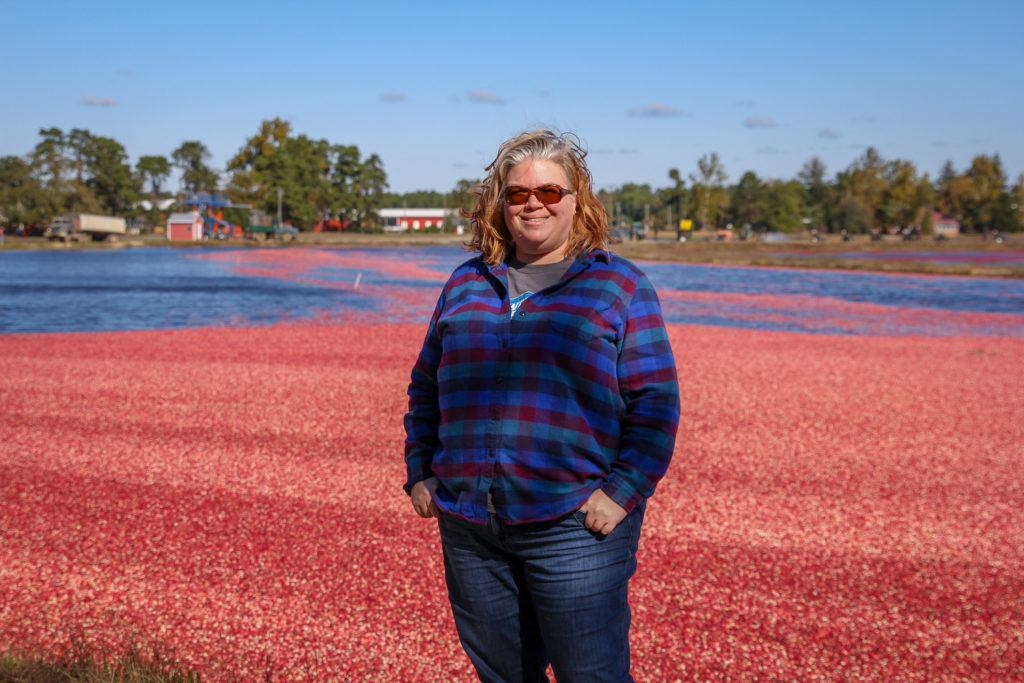
Stefanie Haines, a fifth-generation family member of Pine Island Cranberry
Prashanth Kamalakanthan
Haines seemed much more concerned about installing netting to discourage flocks of migrating swans from landing in the bogs than she was about destroying a quarter of the farm’s crop. That’s in part because Pine Island was somewhat insulated from the volume regulation this year. It had already planned to renovate several bogs, meaning the farm never intended to harvest its full crop in the first place. And Ocean Spray, the cooperative that markets Pine Island berries and more than 60 percent of the fruit nationwide, told its farmers to harvest everything and the company would take responsibility for disposing of the extra fruit.
“We are going to deal with the diversion at the co-op level,” said Kellyanne Dignan, media liaison at Ocean Spray. “The volume regulation allows for disposal in different formats—we can look at making sure we get certain things that maybe are less valuable in the marketplace.” In other words, Ocean Spray will still be able to sell some of the extra fruit in “non-competitive” markets as animal food or for research. More will be donated, and the rest is headed for the compost heap. Dignan declined to speculate on what proportion of the cranberries would be composted because the full crop had not yet been harvested when we spoke.
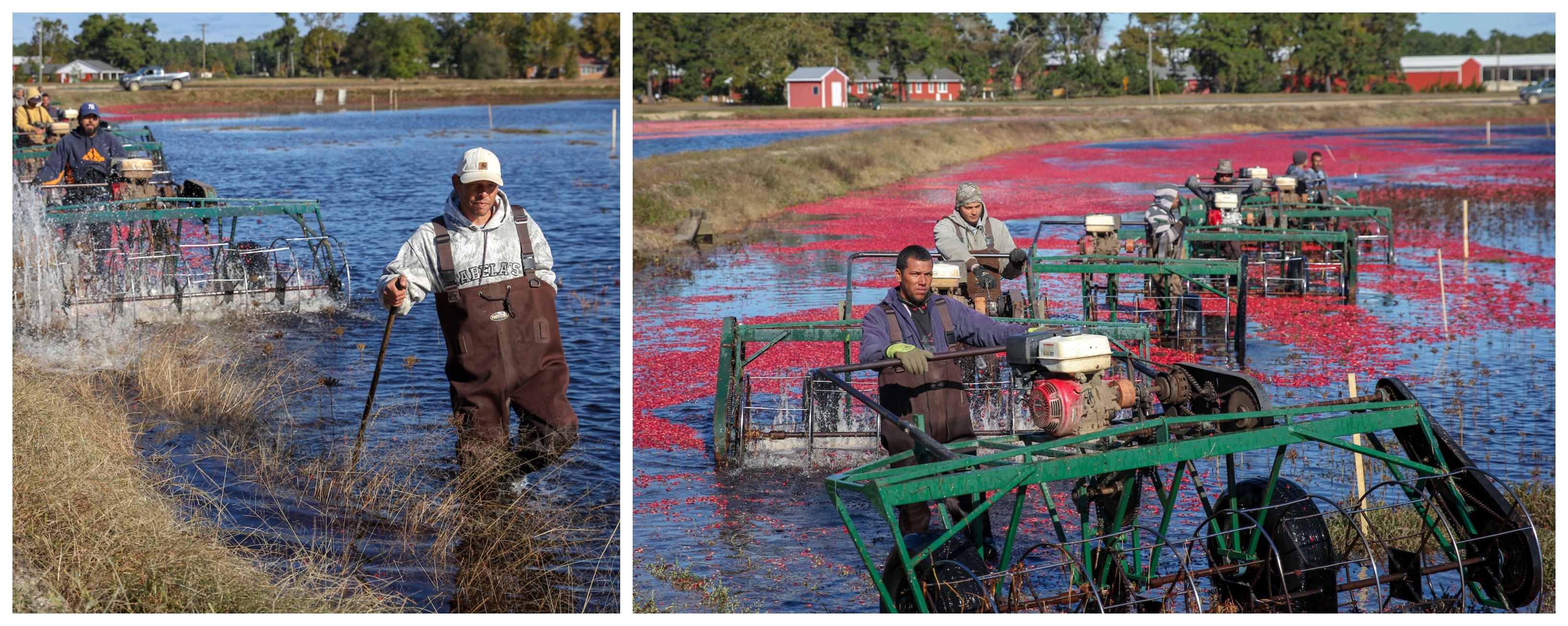
Left: A “leader” walks ahead of other farmhands as they run egg beaters through a bog to keep them from falling into underwater ditches. Right: Farmhands leave pools of freshly-harvested cranberries in their wake
Prashanth Kamalakanthan
Ocean Spray has a lot of experience in managing the market’s ups and downs. More than 50 years ago, the company was behind the first push to establish the Cranberry Marketing Order, the tool the industry is using to limit supply this year. According to research conducted by economists Edward Jesse and Richard Rogers from the University of Wisconsin-Madison and the University of Massachusetts-Amherst, respectively, the Order was a response to the country’s first-ever pesticide-related cancer scare, which gutted the cranberry industry.
In November of 1959, at the tail end of the cranberry harvest and just weeks before Thanksgiving, the U.S. Department of Health, Education and Welfare (later split into the Department of Education and the Department of Health and Human Services) announced that aminotriazole, a pesticide used on berries in the western part of the U.S., had been found to cause tumors in rats. That year, even the Eisenhowers took cranberry sauce off their Thanksgiving table.
The cranberry market cratered. Sales dropped by more than half. The government impounded tons of fruit, then re-released it and compensated cranberry growers to the tune of $10 million. Even after the industry stopped spraying aminotriazole, sales were slow to recover.
Enter the Cranberry Marketing Committee (CMC), a group of growers formed to respond to the wide chasm between supply and demand. The CMC issued the Cranberry Marketing Order, and it has done so a handful of other times throughout its history. Soon after the committee was formed in response to the cancer scare, it asked USDA for permission to set aside 12 percent of the 1962 crop. The logic was the same as it is today: withhold some of the crop to restrict supply, and prices will rise even as demand stays low.
The action worked. Eventually, cranberry juice cocktail caught on with consumers and people started buying the fruit again. The CMC asked to set aside about a 10th of the crop two more times in the 1970s, then stayed pretty quiet for another 30 years.
~
At Pine Island’s offices, a Victorian mansion perched a few steps above a not-yet-flooded bog—Haines said she used to cut across the iced-over bog on her way home from the bus stop as a schoolgirl—everything was cranberry. The Wegman’s soap in the bathroom was cranberry-scented, the carpeting a deep shade of red. A basket of Ocean Spray products set out on the kitchen counter provided a glimpse at the assortment of foods the cooperative hopes will drive up demand: raspberry lemonade-flavored Craisins. Craisins fruit clusters. Pink cranberry juice made from fruit that didn’t quite turn red. Haines was most excited about “pure cranberry,” a new unsweetened juice she said tastes just like raw cranberries.
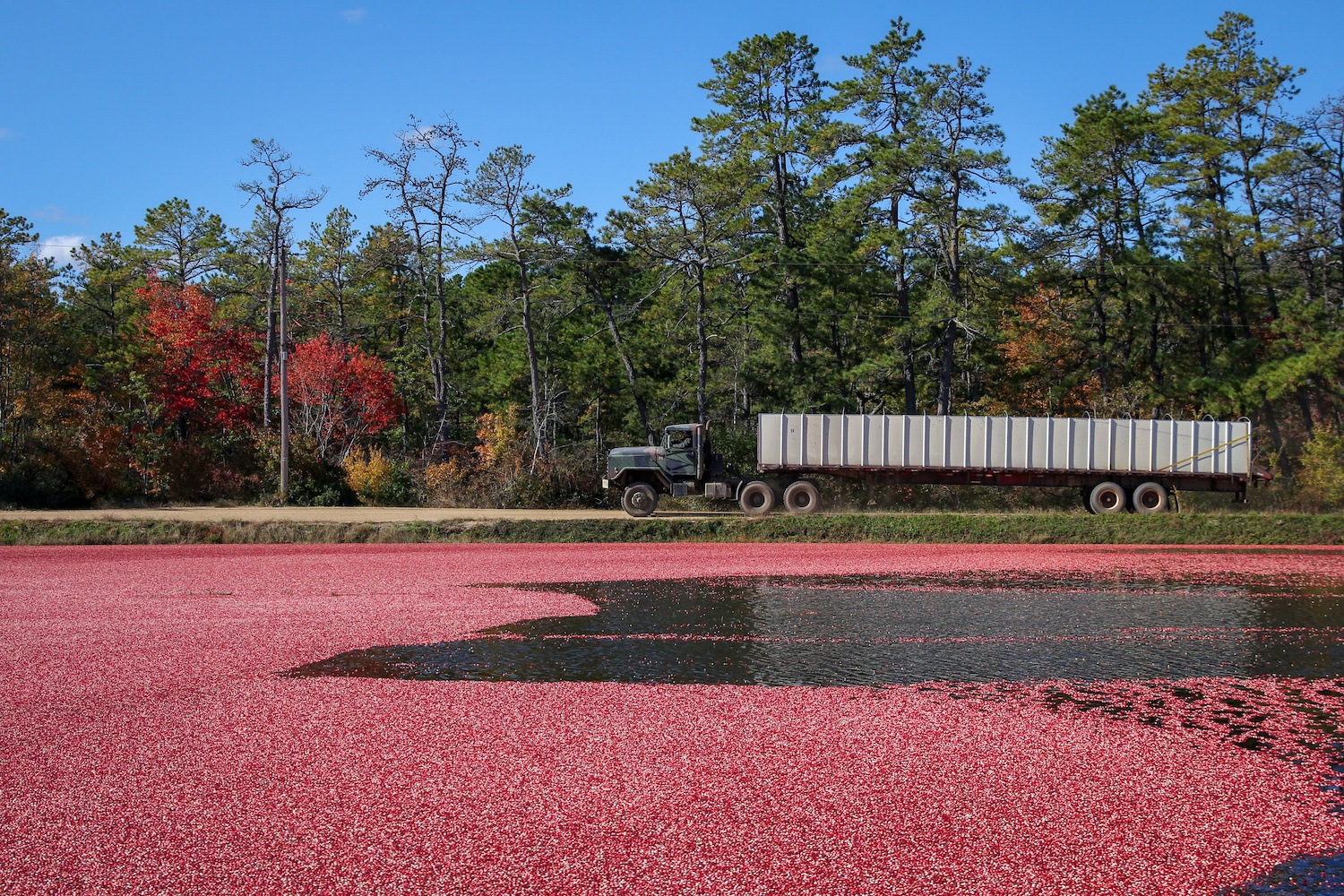
Cranberries in a bog that will soon be corralled and then vacuumed into a truck
Prashanth Kamalakanthan
In the long term, volume regulations aren’t the ideal solution to a mismatch in supply and demand. “Across the board, I don’t think any farmer is happy about volume regulation, but it’s a tool we have in our toolbox to be able to essentially help ourselves,” said Stephen Lee, a farmer at the Lee Brothers farm, a couple miles down the road from Pine Island, when I finally reached him by phone. He was the guy who missed my first call because he was icing his bogs to protect them from frost.
Paul Mitchell, an agricultural economist at the University of Wisconsin, told me it’s a little more complicated than that. “If [the volume regulation] worked well, it would raise the prices more than 25 percent. The problem is that they still have to harvest and destroy 25 percent. They’ve put in a lot of money in terms of input and stuff like that, so they’re actually coming out behind,” he says. Ultimately, though, “they should come out ahead by some amount, and they can sit around and argue about how much.” According to the research conducted by Jesse and Rogers, farmers typically favor volume regulations, while handlers like Ocean Spray prefer to hoard berries in hopes of using extra supply for research and to edge out competitors. Everyone I spoke to for this story said the industry was united in support of this year’s regulations.
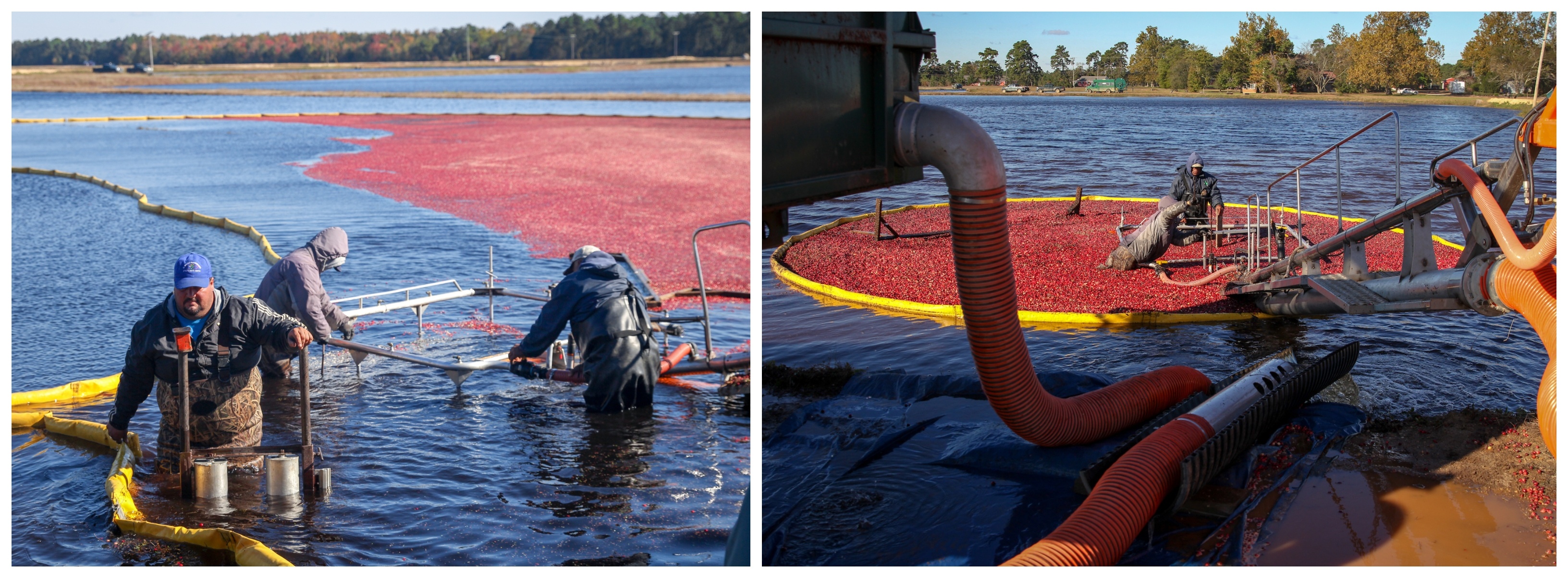
Left: Workers corral cranberries into limited area using a bright yellow hose. Right: Cranberries after they have been constrained to a circle, before they’ll be vacuumed out
Prashanth Kamalakanthan
Regardless of whether or not volume regulations will put more money in farmers’ pockets this year—and no farmer I spoke to would clarify that point—no one wants to destroy 240 million pounds of cranberries each season. Aside from ripping plants out of the ground, the only thing the industry can do is create added demand. Hence the raspberry lemonade-flavored Craisins.
Mitchell said he thinks the industry may be working to develop a sweeter fruit that can be eaten raw, which could do a lot to ramp up demand. And Michelle Hogan, executive director of the CMC, said the group has consolidated its overseas marketing efforts to focus on China and India. Last year, growers in Wisconsin hosted a 20-person delegation from the two countries, wining and dining them with cranberry-themed menus. As much as anything, it’s Hogan’s job to sell a story about the fruit. “They seemed to be very interested in the multigenerational aspect of our commodity,” she said. To wit, the Lee Brothers hosted Chinese podcasters on their farm this year. Neither Hogan nor Stephen Lee said they knew what kind of impact Trump’s tariffs might have on Chinese interest in cranberries.
Of course, oversupply isn’t a permanent condition. The industry can always swing the other way. In the 1990s, cranberry growers had the opposite problem: Sales were booming, and there wasn’t enough fruit to go around. Sweetened cranberry juice had caught on in a big way. In 1994, an Ocean Spray-funded study published by Harvard Medical School found that cranberries help prevent urinary tract infections (UTIs). Sex and the City popularized the cranberry juice-based Cosmopolitan cocktail, and the actors even drank watered-down cranberry juice in bar scenes.
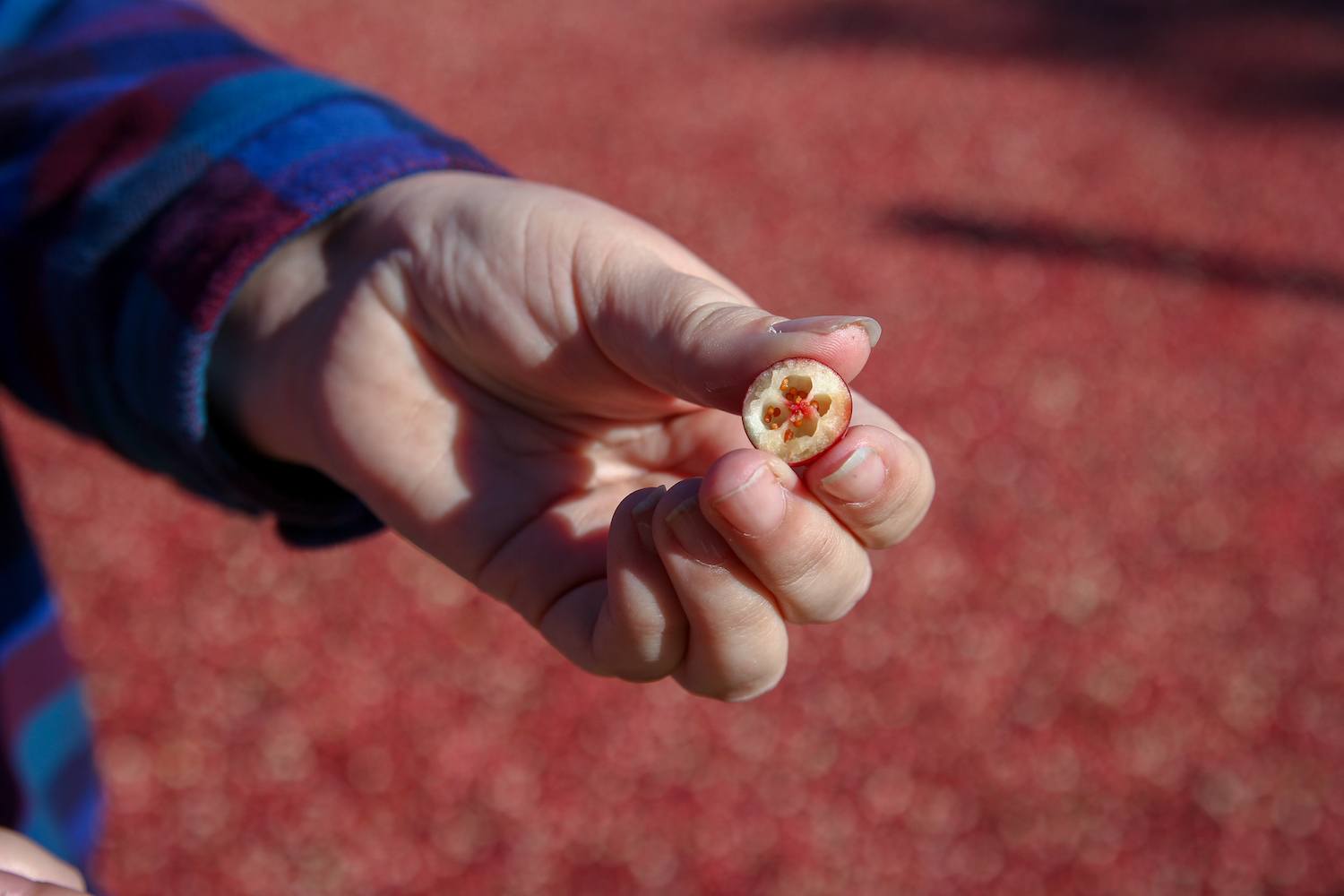
Inside each cranberry are four hollow chambers, the reason why cranberries float in water
Prashanth Kamalakanthan
But cranberry vines can’t keep up with pop culture’s breakneck speed—or changing consumer tastes. “There’s this biological aspect to the market—it’s not like plastic widgets,” Mitchell said. As the tart fruit became increasingly popular in the 1990s, farmers rushed to expand their operations. They started planting hybrid varieties, which can double or triple the productivity of a single plant. But it takes a few years for vines to produce fruit, and by the time those vines did, growth in demand had slowed. Prices plummeted.
In March of 2000, the CMC considered withholding supply once again. It voted to approve a 15 percent volume regulation that year, then implemented an even tougher restriction—35 percent—the next year. In 2002, USDA purchased half-a-million barrels of cranberries, and the CMC did not recommend a third year of withholding supply.
Jesse and Rogers argued that, since Ocean Spray sold the vast majority of cranberries in the U.S. at the time, the cooperative could have foreseen the cranberry glut of the early aughts. They concluded that “Ocean Spray did not demonstrate industry leadership” during the 1990s, instead encouraging its farmers to invest in growth based on all-too-optimistic sales forecasts. It even offered planting grants to subsidize their expansion. According to Jesse and Rogers’s analysis, the crash of the early aughts may have been “substantially softened,” had the cooperative been more cautious about growth.
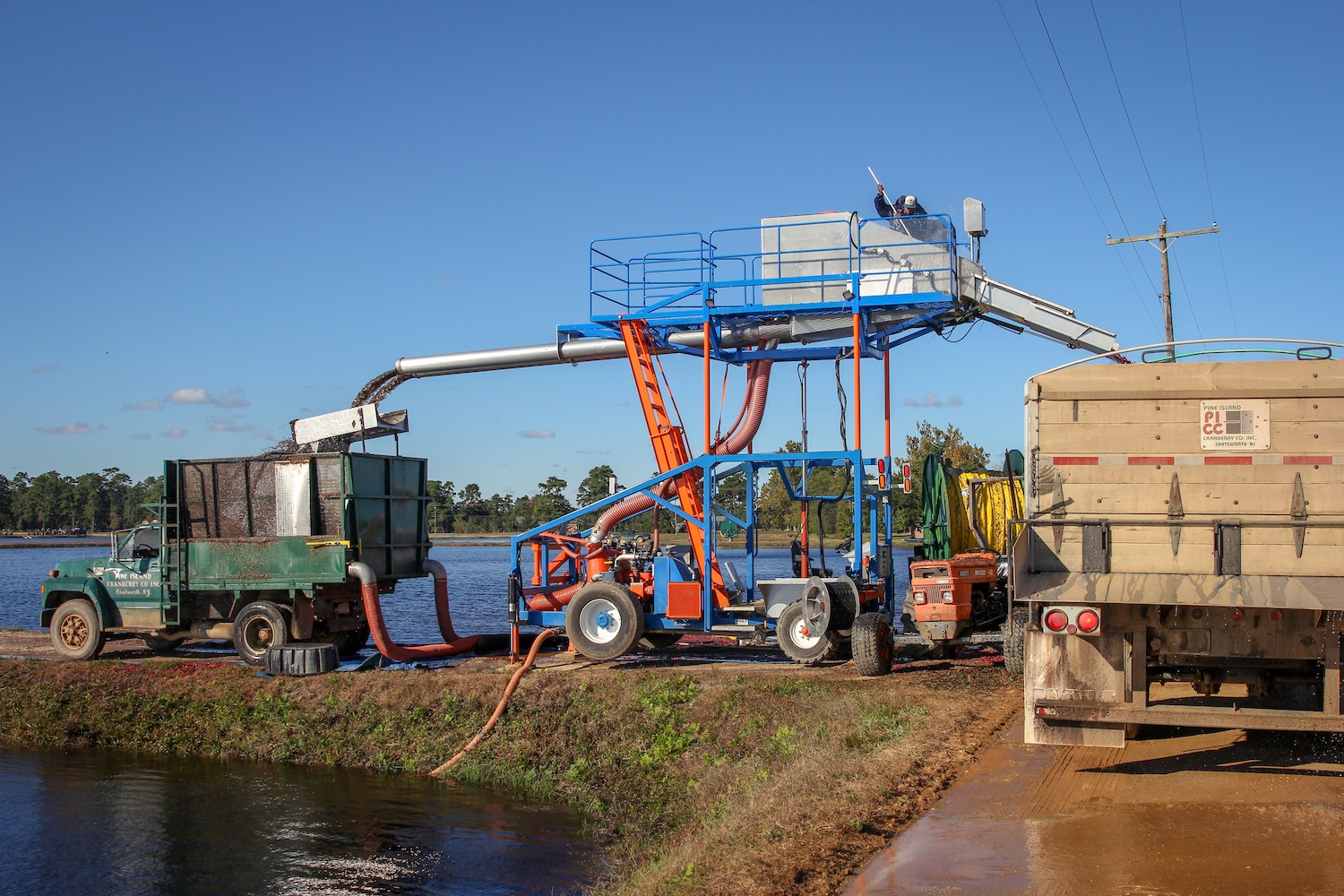
After cranberries get vacuumed up, they are poured into a truck (right), while debris is separated and dumped into another truck (left)
Prashanth Kamalakanthan
Hogan said the 2017 and 2018 volume regulations are a symptom of a similar problem.
“Back in 2008, the prices were at an all-time high. Sales were booming. What happened was that growers said, ‘Well this is great. I’m going to plant more.’ And they did,” she said. “By 2010, we had a lot of extra acres that were being planted, including hybrids, but then we started to see sales stabilize.”
Today, those plants have matured. Even after last year’s volume regulation, which was imposed after the harvest had finished, millions of barrels of cranberries still remain in storage. This year, the CMC hoped the Trump administration would approve a volume regulation before the growing season began so that farmers could avoid spending time and money on fruit they couldn’t sell—or would have to destroy. (The later the industry is granted a volume regulation, the higher the number of wasted cranberries. In 1999, the CMC refrained from imposing a volume regulation because it feared a public relations and environmental fallout from destroying part of the crop.)
The Committee submitted its request in August of 2017, hoping it would hear back from USDA by the time growing season began in April or May of this year. The agency was slow to respond. “We had a new administration. They don’t like regulations, period,” Hogan said. The agency sent them a proposed rule in April, but the final rule wasn’t published until September, after some growers had already started harvesting their fruit.
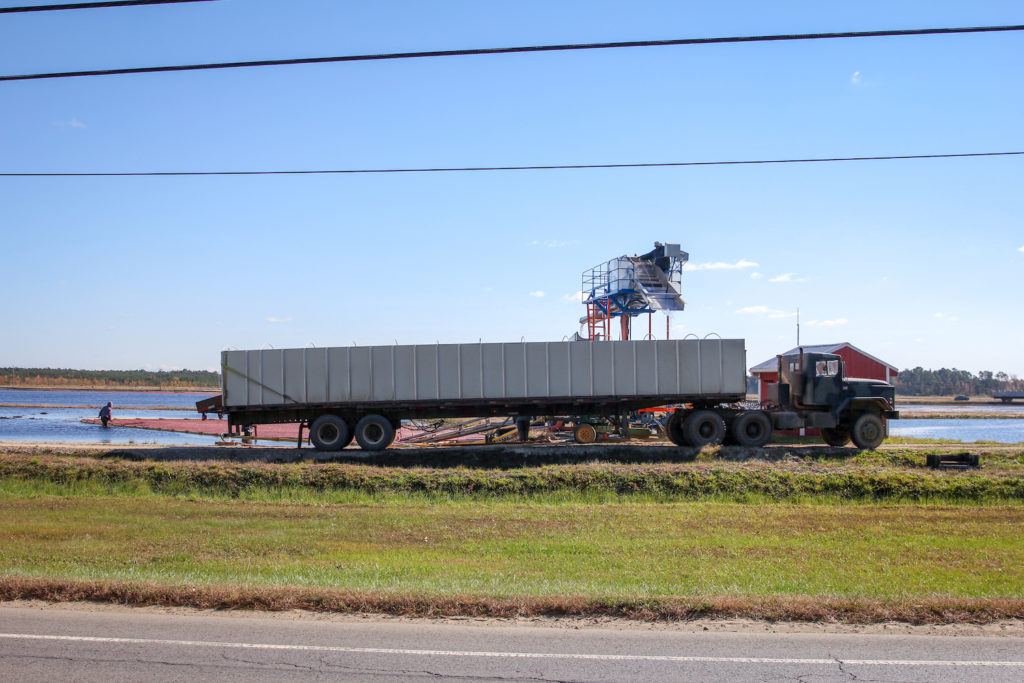
Harvested cranberries are collected in a truck, which delivers them for processing
Prashanth Kamalakanthan
After this season, Hogan’s team will still have to deal with the abundance of fruit that’s already in the ground. “We don’t have the authority to tell our growers what to plant or what not to plant or how much to plant,” she said.
Ironically, the new rule actually favors growers who have recently expanded their operations. “As a matter of fact, you would think—as the growers are overplanting and we’re in volume regulation, we still have growers that will plant—those growers should be more restricted,” Hogan said. Rather than ding farmers or cooperatives who have pursued overly optimistic growth strategies, the new rule actually gives additional allotments to growers who have recently added new acreage. No one is incentivized to scale back.
I ask Paul Mitchell, the Wisconsin agricultural economist, why cranberry growers are allowed to impose these narrow, distorted limitations on supply when the type of food they’re growing isn’t exactly essential for our survival. I told him I was struggling to draw the distinction between tuna price-fixing (illegal) and cranberry volume regulations (totally legal).
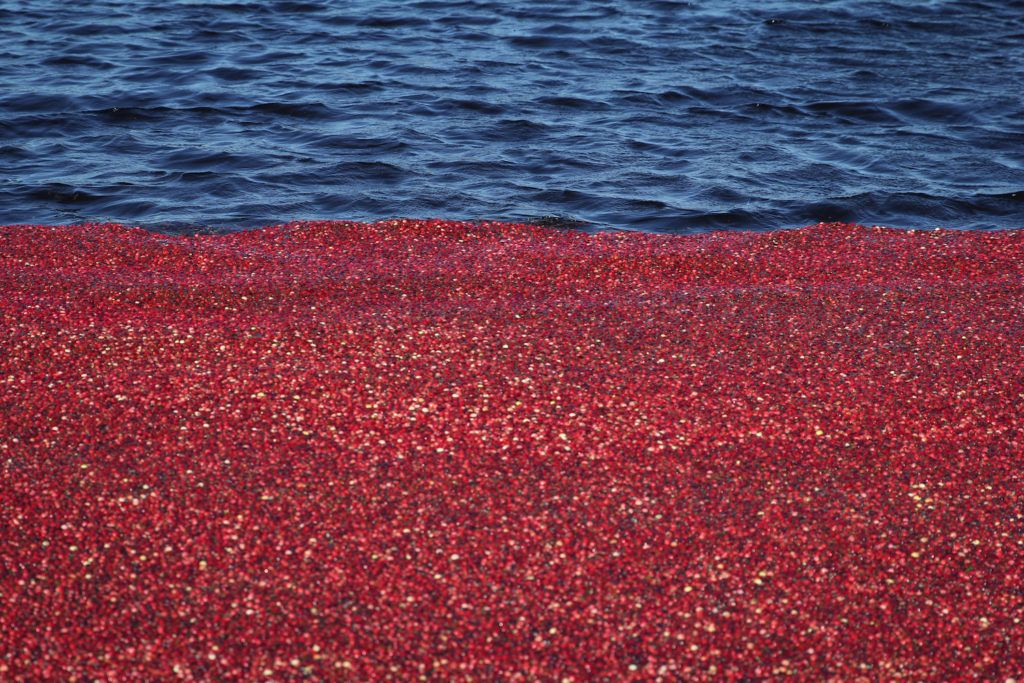
We’ll waste 240 million pounds of cranberries this year. That’s enough to feed the entire country on Thanksgiving for three years
Prashanth Kamalakanthan
Mitchell reminded me that prices for corn and soybeans are far more artificial than cranberries and almonds—and those price supports are federally sanctioned, too. Corn subsidies alone have cost taxpayers more than $110 billion since 1995. Cranberry volume regulation, by contrast, doesn’t cost taxpayers much of anything.
“Part of it is just the biology of the whole system,” he added. “It takes years to get these crops going. Once you have it planted, you’re not going to destroy it.”
In the meantime, we’ve still got way too many cranberries and not enough people to eat them. Next year, the opposite may be true. Either way, the Haines family cranberry farm will be passed on to the next generation. One of Haines’ young children likes eating raw cranberries. She thinks he might be the one.


